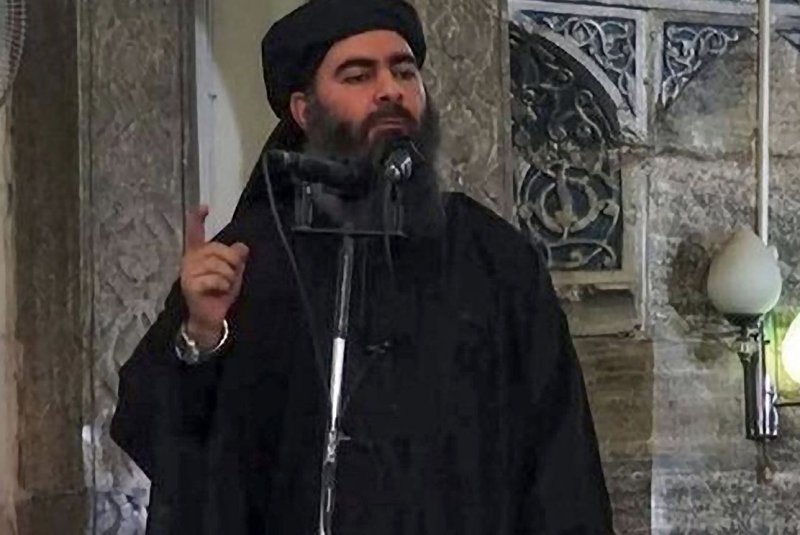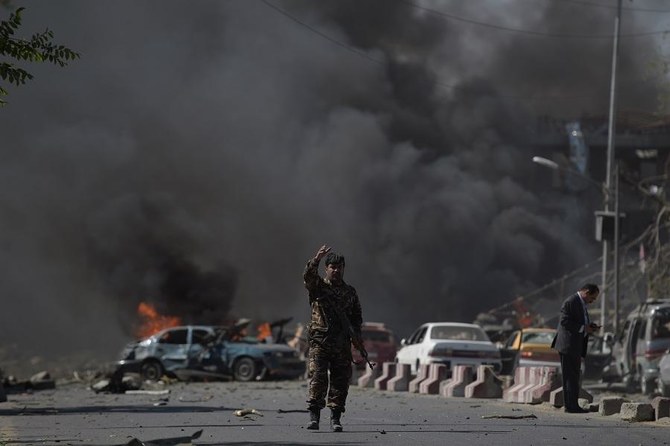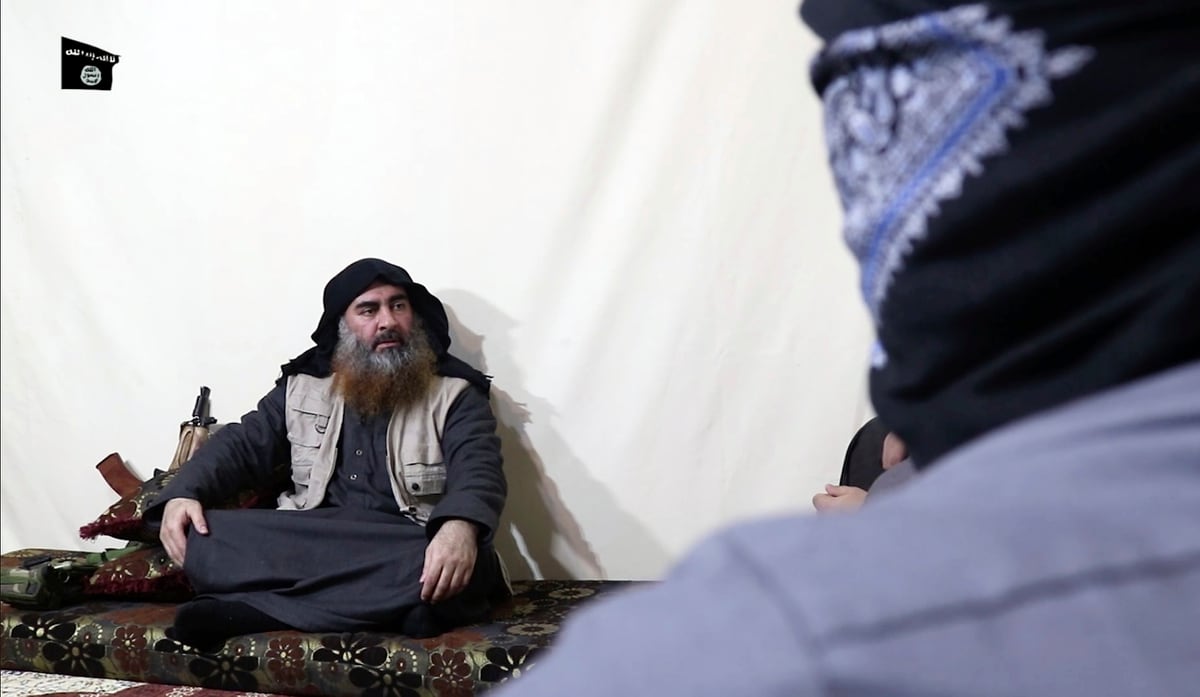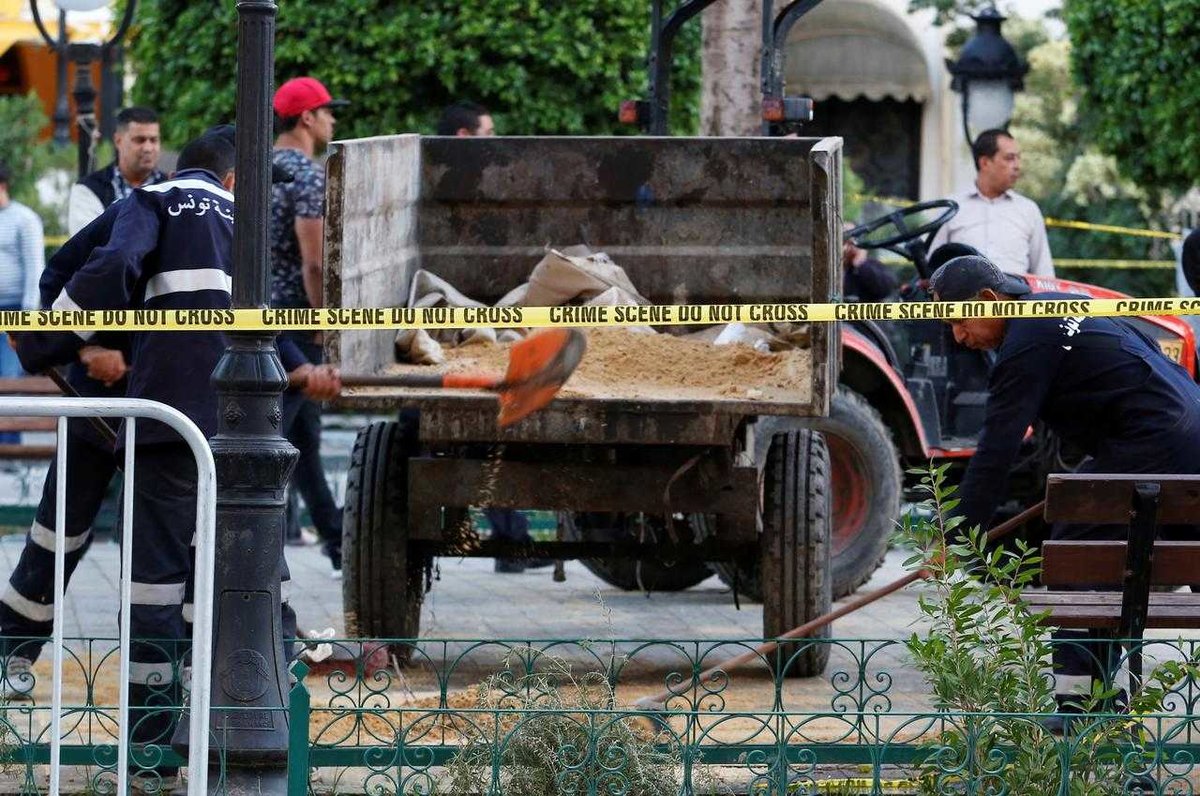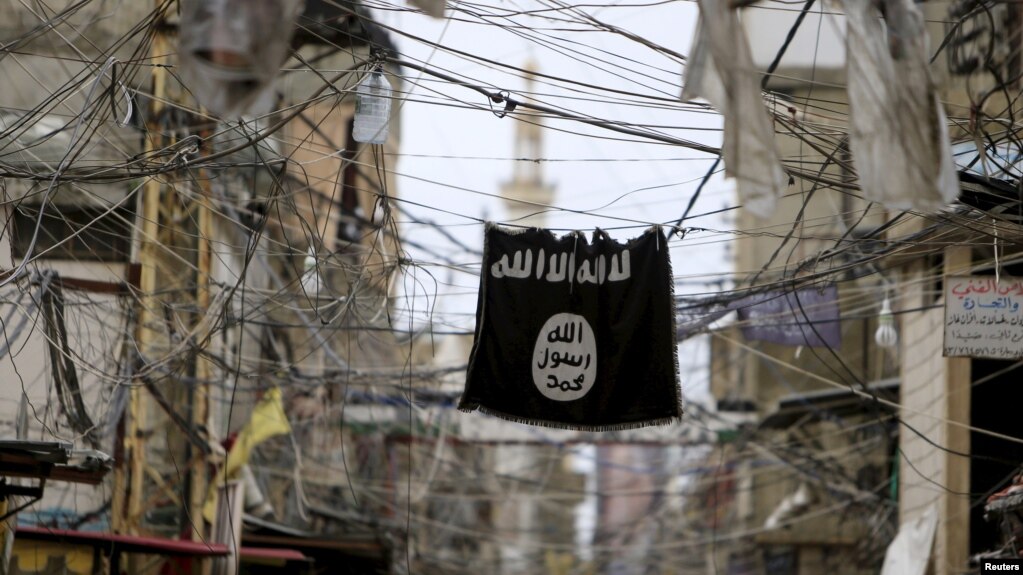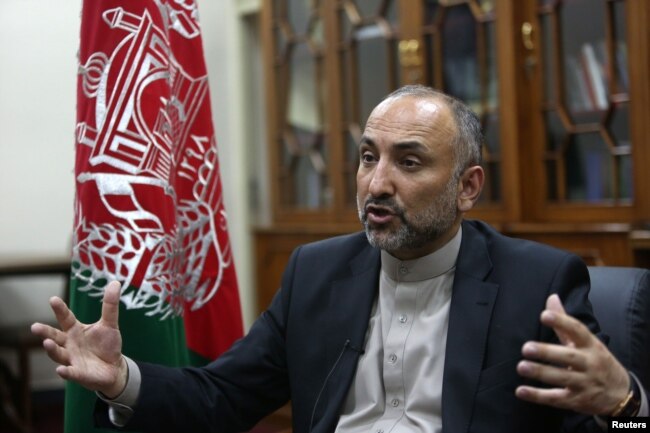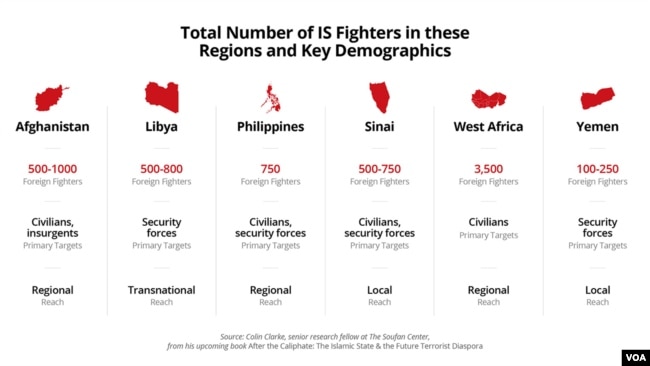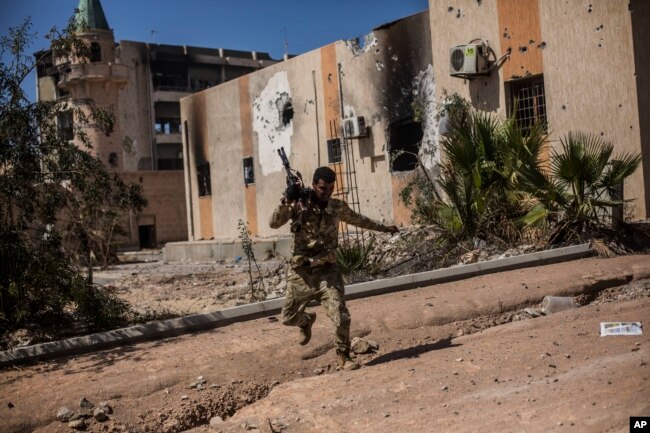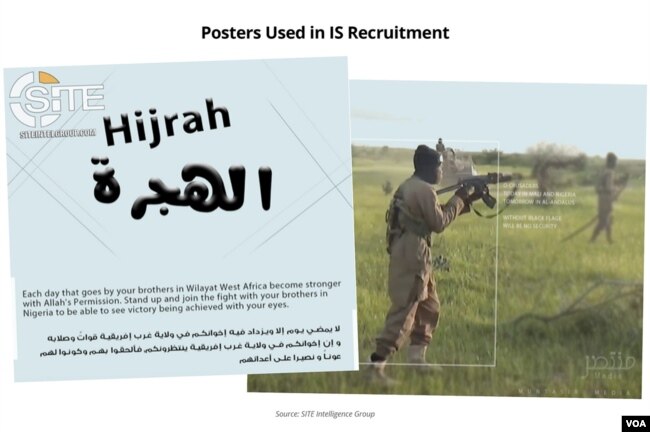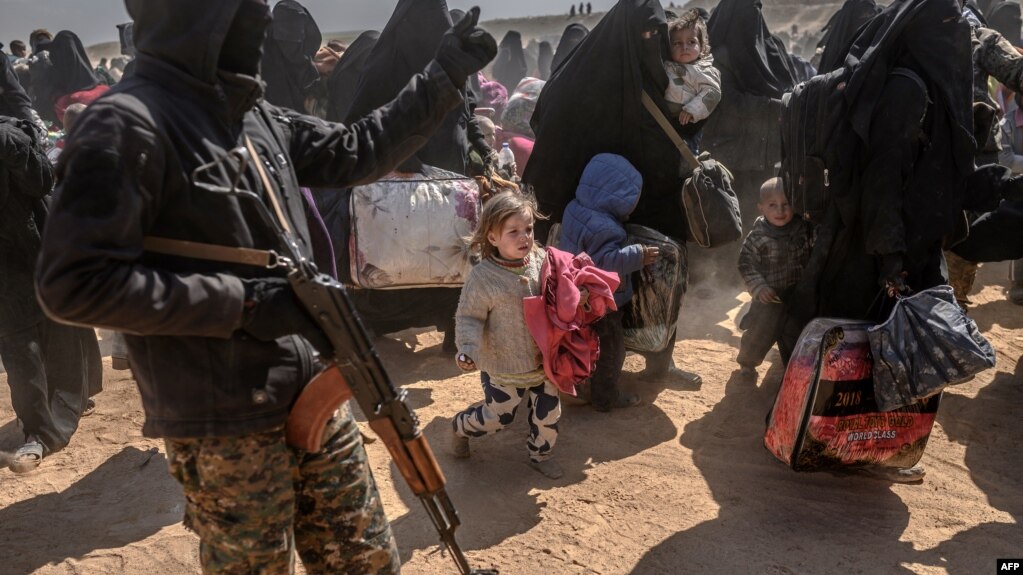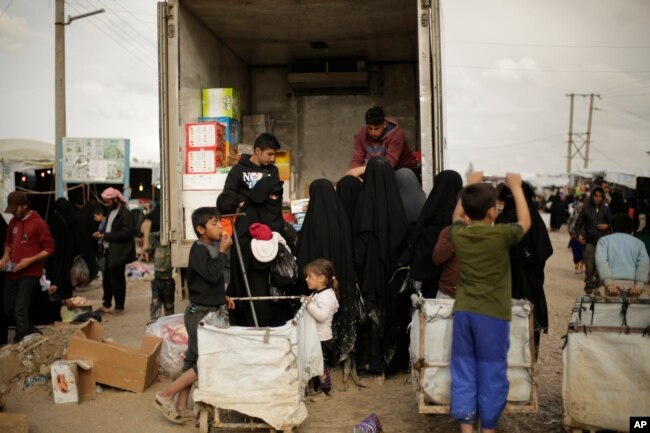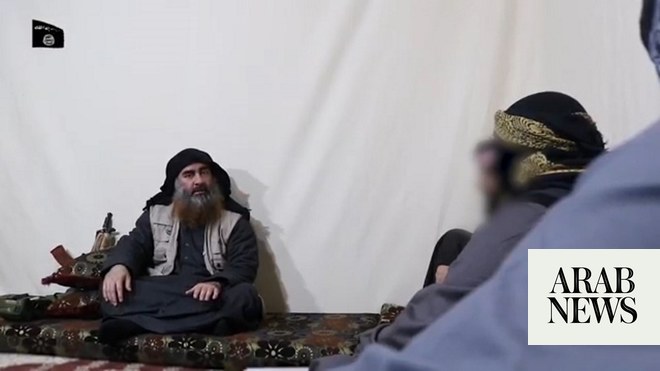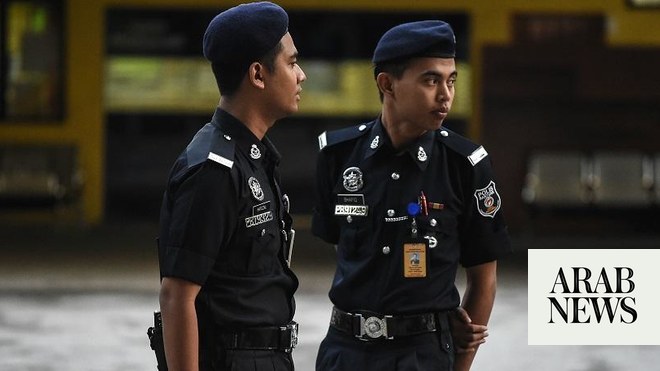Even in Defeat, Islamic State's Foreign Fighters Expanding
May 08, 2019
Jeff Seldin
FILE - An Islamic State flag hangs amid electric wires over a street in Ain al-Hilweh Palestinian refugee camp, near the port-city of Sidon, southern Lebanon Jan. 19, 2016.
This is part two of a four-part series.
WASHINGTON — It was March 2018, approximately five months after U.S.-backed forces had declared victory in the battle for the Islamic State terror group's Syrian capital of Raqqa. And Afghan officials had reason to worry.
Intelligence suggested the fallout from that victory had been making its way, slowly but surely, to their country.
"There has been a growth in the number of the foreign fighters in the country," then-Afghan national security adviser Mohammad Hanif Atmar said during a visit to Washington. "We're talking about hundreds of them coming from the Middle East through Pakistan."
FILE - Then-Afghan National Security Adviser Mohammad Hanif Atmar speaks with The Associated Press, in Kabul, Afghanistan, Oct. 24, 2015.
The warning did not go unnoticed. Soon, the concern was being shared by a growing number of countries.
IS fighters were coming in increasing numbers, a United Nations report warned in August, adding that those making the journey were "bringing with them skills in handling weaponry and improvised explosive devices, and knowledge of military tactics."
"Central Asian fighters tend to feel most comfortable relocating among Afghans of Uzbek and Tajik ethnicity," the U.N. report said.
The trend has not slowed.
A
U.N. report issued in January cited intelligence from one member state that "30% of foreign terrorist fighters have left the Syrian Arab Republic and Iraq for various countries, usually their countries of origin."
Such numbers are not insignificant. Despite claims by U.S. and coalition officials that as many as 70,000 IS fighters were killed in the effort to destroy the caliphate, the foreign fighter presence remained strong.
"We don't know how many have died. But we can assume that at least 50% survive," Edmund Fitton-Brown, coordinator of the United Nations analytical support and sanctions monitoring team for IS, al-Qaida and the Taliban, told the CTC Sentinel, in an
interview published in April.
"My personal guess is more. I think probably one would be looking at more like a one-third attrition rate or something of the sort," Fitton-Brown added.
It is a concern that has been grabbing the attention of top U.S. officials, as well, long before IS's self-declared caliphate entered its final death throes.
"Even if the numbers are small, they always have a disproportionate effect," Lt. Gen. Michael Nagata, director of strategic operational planning at the National Counterterrorism Center, told VOA in 2017.
"They bring leadership. They bring skill. They bring experience. And perhaps most importantly, they are totally committed," Nagata said.
More recently, senior U.S. officials have been shifting their attention to where IS foreign fighters are likely to make the biggest impact.
"In terms of the next phase of the mission, it is continuing to remain vigilant about the ongoing threat of ISIS," a senior U.S. administration official said this past December, using an acronym for the terror group, and pointing to places such as Afghanistan, Libya and Egypt's Sinai Peninsula, long seen as potential landing spots for surviving foreign fighters.
Libya
Perhaps the biggest concern focuses on Libya, where the coastal city of Sirte was at one time seen as IS's third capital.
Once a base of operations for as many as 6,000 fighters, some of them sent by IS leadership in Iraq and Syria, the IS presence in Libya has dwindled, with some analysts estimating fewer than 1,000 fighters remain.Many warn, however, the failed state has been a perfect incubator for IS foreign fighters who likely make up more than 80% of the total force.
"ISIS in Libya is back," said Jason Pack, founder of Eye on ISIS in Libya, a nonprofit research organization. "They retreated, regrouped and then reengaged."
Pack warned the recent spike in fighting, a result of a military offensive by Libyan strongman Gen. Khalifa Haftar, may make Libya an even more attractive destination for IS fighters.
FILE - A fighter of the Libyan forces, affiliated with the Tripoli government, runs for cover while fighting against Islamic State positions in Sirte, Libya, Sept. 22, 2016.
"If I was a jihadi and I saw that he was winning, I'd very much want to be there," Pack said. "Whereas they are not going to defeat [Syrian President Bashar al-] Assad, they may participate in the defeat of Haftar."
In early April, IS launched an attack against Haftar's forces in southwestern Libya, claiming six soldiers were killed.
IS in Libya may also be finding ways to benefit from the country's history as a transit and resupply point for jihadis active in other conflicts.
"It's definitely likely that Libya is being used as a place to move people to try and get to other war zones or rest from battles in places like Mali, especially in the southern part of the country," said Aaron Zelin, a fellow with The Washington Institute for Near East Policy and founder of the Jihadology website.
Sinai
In neighboring Egypt, IS has established a solid foothold in the Sinai Peninsula, with its branch there long viewed as the country's most dangerous terror group.
Boasting an estimated 500 to 750 fighters, it has carried out repeated attacks against Egyptian security forces in the Sinai Peninsula and the Nile Valley. In October 2015, a bomb planted by IS Sinai brought down a Russian airliner, killing all 244 people on board.
"It's one of those classic ungoverned territories, and the Egyptians are really struggling to combat the insurgency there," said Colin Clarke, a senior research fellow at The Soufan Center."Some of the tribes in and around the Sinai are a bit more transactional and so less willing to drop a dime on people that may be up to nefarious things."
West Africa
Islamic State's West African province was established in May 2015, when the then-leader of Nigeria's Boko Haram terror group, Abubakar Shekau, abandoned ties to al-Qaida and pledged allegiance to IS.
Since then, the group has split in two, with the larger faction keeping the IS name.
"They're the one that we have the most concern about," Gen. Thomas Walhauser, the outgoing head of U.S. Africa Command, told lawmakers earlier this year.
"They have been very aggressive," he said. "They now have taken large pieces of real estate in northern Nigeria."
Adding to the concern, U.S. officials believe the group has been growing, boasting between 3,000 and 4,000 fighters.
It also appears to have started a recruiting campaign specifically to attract foreign fighters.
According to SITE Intelligence, the IS-aligned Muntasir Media group began publishing posters online this month.
"Each day that goes by, your brothers in Wilayat West Africa become stronger," one of the posters read, in English. "Stand up and join the fight with your brothers in Nigeria."
Another, showing a photo of an armed gunman, read, "O Crusaders, Today in Mali and Nigeria. Tomorrow in al-Andalus [Spain]. Without Black Flage [sic] Will Be No Security."
Philippines
In May 2017, militant Islamists who had pledged themselves to IS attacked Marawi, a city on the southern Philippine island of Mindanao, sparking a five-month battle with the Philippine military for control.
Philippine officials said the attackers, mainly local groups that had flocked to the IS banner, got help from the outside, and boasted foreign fighters from Syria, Saudi Arabia, Yemen, Kuwait, Chechnya, Pakistan, Indonesia and Malaysia.
According to U.S. defense officials, by the time the battle for Marawi had ended, more than 1,000 fighters had died. Officials also thought that ties between IS-Philippines and IS in Syria had been severed following the death of IS-P's leader, Isnilon Hapilon, in October 2017.
Since then, U.S. officials estimate IS-Philippines has been able to rebuild some of its strength — up to about 500 fighters — though independent analysts say the number is likely closer to 750.
As of December 2018, U.S. Indo-Pacific Command told a U.S. inspector general report that "there were approximately 40 foreign fighters, mostly from Malaysia and Indonesia, in the Philippines," adding, "there was no evidence of either an influx or exodus of foreign fighters during the quarter."
As Mosul and Raqqa fell, IS was already putting in place the building blocks for a post-caliphate diaspora

www.voanews.com

